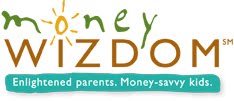
We have some suggestions for fun activities with your kids
this St. Patrick’s Day. Why not kick things off with these riddles?
Q. What do you
call a fake stone in Ireland?
A. A sham rock.
Q. What is a
nuahcerpel?
A. Leprechaun
spelled backwards.
Q. What is out on
the lawn all summer and is Irish?
A. Paddy O'
Furniture.
Q. Why do frogs
like St. Patrick's Day?
A. Because they're
always wearing green.
When to Do
On the weekend or after school
What to Do
Let your kids help plan and manage the activity budget you
choose this year — and take part in the activities, too, of course!
1. Invite
your kids to select this year’s St. Patrick’s Day activity. Here are some
suggestions; feel free to spin off variations will be most engaging for your
kids.
·
Festive table decorations, like Pots of Gold (yellow
Jell-O in lime-green “pots”), rainbow placemats, green napkins.
·
Learning about St. Patrick and the holiday by
reading. Some suggested titles: That’s What
Leprechauns Do,
Tim O'Toole and the Wee Folk, and St. Patrick's Day
(Rookie Read-About Holidays).
2. Work
with your kids to compile a shopping list for the items you’ll need for the
activity. Help your kids research costs by going online and finding ads in
newspapers or catalogs.
·
You may already have some of the items, so just
estimate the cost for them on the budget worksheet.
·
You may also have coupons for some of the items!
3. Make
a simple worksheet for the activity budget so your kids can help determine how
much the activity will cost all together; for example:
What
we need How
much it costs
Item 1
Item 2
Item 3
Total
Cost:
4. Once
you have confirmed the budget, give your kids the activity budget money to be
responsible for while shopping. If you have more than one kid, consider doing
two activities or having them manage the activity budget together.
5. If
there is any money left after shopping, consider letting your kids keep it as a
reward for a job well done, or see whether they would like to donate the extra
money to a local charity.
What You Will Need
Paper and pencils
Catalog, Sunday inserts
Printout of recipe and ingredients if you decide to make a
dish
Talk About It
Ask you kids if they thought it was easy or hard to plan for
this activity. How did they like figuring out the budget? Did they get the
budget right? If they had extra money left over, how did that feel? Did they
like the riddles?




